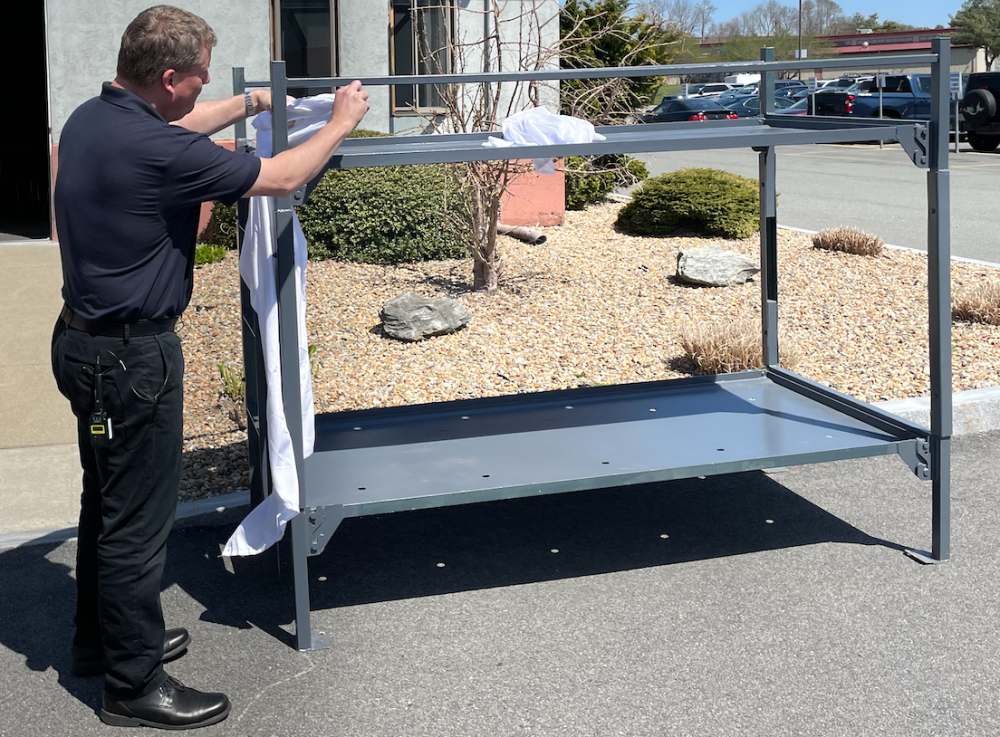Bed design creates hazards for potential inmate suicide, report states
DARTMOUTH — All seven recent suicides at the Bristol County House of Correction in Dartmouth involved metal beds that “contained numerous hazards and protrusions that were conducive to suicide by hanging,’’ according to a report released Thursday, April 13 that made recommendations to reduce suicide risk.
In the Dartmouth cases, individuals hanged themselves by using railings or ventilation holes in the metal bunk beds as anchoring points, according to the report, which was written by Lindsay Hayes, a specialist in jail suicide and discussed at a press conference at the Dartmouth facility.
“None of these cells were suicide-resistant,’’ Hayes wrote.
The Bristol County Sheriff’s Office reported 10 suicides from 2017 to 2023, with seven of them occuring at the Dartmouth facility.
The 10 suicides translated to a death rate of 165.1 deaths per 100,000 inmates, which Hayes said was more than three times the national average of 49 inmate deaths per 100,000.
Reducing suicides at the jails was one of Bristol County Sheriff Paul Heroux’s top policy priorities during his campaign for sheriff. He defeated long-time Sheriff Thomas Hodgson in the fall 2022 election.
According to the New England Center for Investigative Reporting, at least 16 people died by suicide between 2006 and 2017 while in the custody of the Bristol County House of Correction — the highest number in the state correctional system during that period
Soon after his inauguration, Heroux commissioned a study to look at ways to reduce suicide risks.
He noted that, after previous suicides, officials responded that policies and procedures had been followed. That may have been the case, Heroux said, but the outcomes proved that those procedures weren’t working.
He wanted to bring a “fresh set of eyes’’ to examine the issue. Heroux hoped the report would address the questions of “What are we doing wrong?’’ and “What is our blind spot?’’
Construction is underway on new beds that will reduce the risk of suicide by providing fewer “choke points.’’ These will include a circular design to replace horizontal railings and paint with a more slippery finish that will make items more difficult to attach.
Heroux displayed one of the new beds at the press event Thursday and contrasted it to the current design. No timeline or price tag for replacing the beds was available.
He said that there is “no such thing’’ as a completely suicide-proof bed but that the new style would provide “fewer choke points’’ for potential hangings.
The report issued a series of other recommendations. These included:
Avoiding isolation. Whenever possible, he wrote, inmates at risk of suicide should be housed in the general population, a mental health unit or a medical infirmary.
Expanding training for correctional officers on suicide prevention and awareness. Correctional officers are often the closest observers to inmate behaviors and activities, the report stated.
Allowing for more privacy and time for inmate intake. Inmates are more likely to share suicidal thoughts in a private setting, according to the report, with few others around and after some time in conversation.
Completing thorough reviews after a suicide. Within 30 days, the review should be completed, with possible recommendations related to the specifics of the case.
A committee will be assembled to review the recommendations and determine the best method to put them in place, Heroux said. Suicide is “impossible to prevent’’ in all circumstances, he said, but “we can take steps’’ to reduce the risk.
If all the recommendation in the report has been followed, he said, “I think some suicides could have been prevented.’’
Read the report here.















